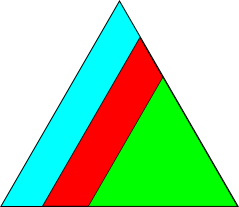to_rodrigues#
- Symmetry.to_rodrigues(frank: bool = False) Rodrigues | ndarray[source]#
- Return the unit quaternions as Rodrigues or Rodrigues-Frank
vectors [Rowenhorst et al., 2015].
- Parameters:
- frank
Whether to return Rodrigues vectors scaled by \(\tan(\theta/2)\), where \(\theta\) is the angle of rotation, or Rodrigues-Frank vectors scaled by \(\omega = 2\arctan(|\rho|)\) in an array.
- Returns:
roVectors \(\hat{\mathbf{n}}\) parallel to the axis of rotation if
frank=Falseor an array of four-component vectors iffrank=True.
See also
Notes
Rodrigues vectors, originally proposed by O. Rodrigues, are often used for plotting orientations as they create isomorphic (though not volume-preserving) plots and form fundamental zones with rectilinear boundaries. These features are well-demonstrated in [Frank, 1988]. See [Rowenhorst et al., 2015] for examples of usage of Rodrigues-Frank vectors.
Examples
A 3-fold rotation around the [111] axis
>>> from orix.quaternion import Quaternion >>> Q = Quaternion.from_axes_angles([1, 1, 1], 120, degrees=True) >>> ro1 = Q.to_rodrigues() >>> ro1 Rodrigues (1,) [[1. 1. 1.]] >>> ro1.norm array([1.73205081]) >>> ro2 = Q.to_rodrigues(frank=True) >>> ro2 array([[0.57735027, 0.57735027, 0.57735027, 1.73205081]]) >>> np.linalg.norm(ro2[:, :3]) 1.0
A 45:math:degree rotation around the [111] axis
>>> Q2 = Quaternion.from_axes_angles([1, 1, 1], 45, degrees=True) >>> ro3 = Q2.to_rodrigues() >>> ro3 Rodrigues (1,) [[0.2391 0.2391 0.2391]]
